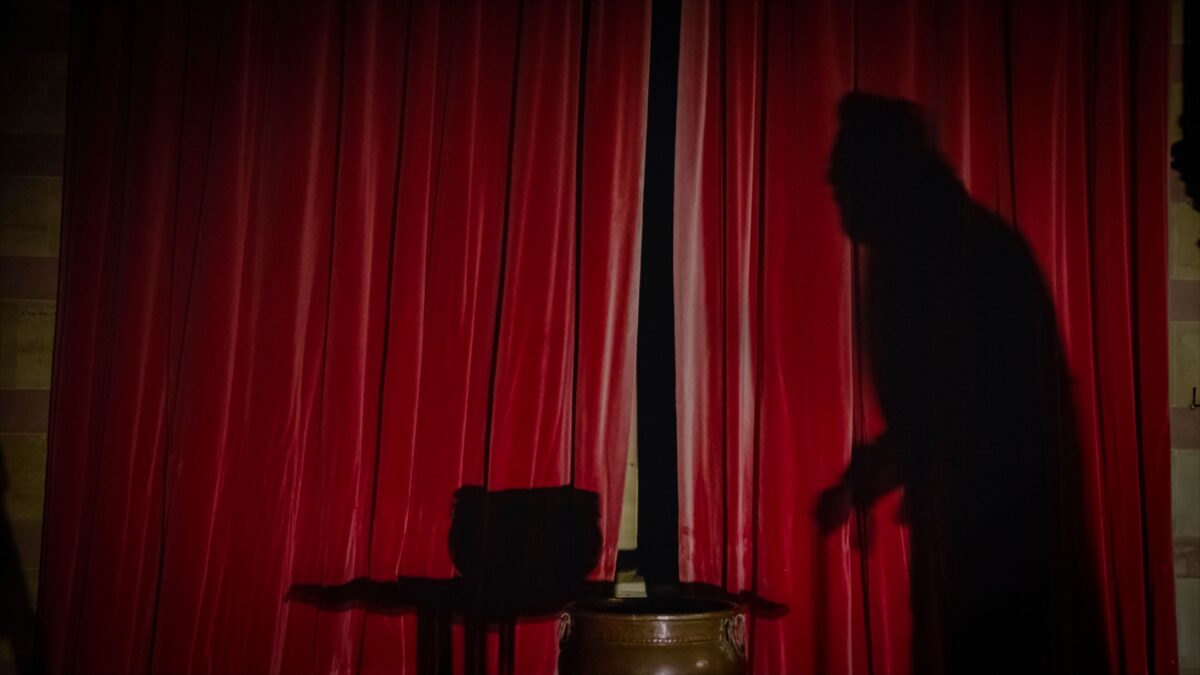2022 was the first year in which photogénie was led by an editorial board consisting of six alumni of the Young Critics Workshop. For three of the four issues they edited, they chose an essence of cinema as its guiding theme: absence, compromise and remaking. Judging by the preoccupations of the essays that came out of the Workshop that year, it seems that our editorial board was on to something. Among the five essays that make up the 2022 Young Critics Workshop issue, several deal with (auto) remaking and the compromises inherent in adapting other people’s writing and ideas to the screen, but, more prominently, all deal with matters of absence.
The foundational absence at the heart of Aleksandr Sokurov’s work, is that of the past. Angelo Elia argues that in Fairytale, his most recent cinematographic invocation of the ghosts that haunt Europe’s modern history, Sokurov mourns the nameless victims of the prominent specters called Mussolini, Hitler, Churchill and Stalin. Sokurov is aware that we cannot return to the past as if it were present, that it is irreparably gone, but that does not absolve us of our responsibility to reckon with it.
Reckoning with the past is also what has driven much of Jean-Luc Godard’s late films. Although the man himself is almost as elusive as Sokurov’s ghosts, he appears in the constitutive components of his art—sound, image, text—not only in his own films. Arta Barzanji examines how Godard’s philosophy of cinema also extends to his appearances and disappearances in the work of other filmmakers.
Even beyond his affinity with 1960s French culture, Haruki Murakami might sympathize with Godard’s (dis)appearing act, since the best way to adapt Murakami’s writing to the screen might be not to adapt a Murakami story directly. Dora Leu explores how the writer’s idiosyncrasies relate to both (straight and indirect) adaptations of his work and the work of kindred filmmakers, dwelling on his tendencies for assimilation and repetition.
Repetition is at the heart of the work of Hong Sang-soo and Paul Schrader, two very distinct filmmakers who share an appetite for returning over and over to the same characters, stories and stylistic devices. Kenny Nixon discovers a revelatory potential in this stubborn dedication to repetition, in which the artist is revealed through the accumulation of recurrent images and sounds. Although not visibly or audibly present in any single film, the two directors and their entire oeuvre are nevertheless felt in every one of their works, which invites a different kind of viewing.
The spectator’s position is also put under scrutiny in the final piece of this issue. Sofie Delrue dives into the emotional abyss that is Philippe Garrel’s Le Révélateur, exploring its conspicuous absence of physical interaction between the characters and how that seemingly paradoxically triggered a physical reaction in her as a viewer. In the gap between physicality and detachment that the film tensely foregrounds, she finds one of the essences of cinema.
These five pieces are anything but detached. They each testify to a personal engagement with their subject, from a vantage point that allows the writers to look beyond the confines of a single film, to the cinema at large and the culture that informs it and which it helps shape in return. In short, these five pieces are all prime examples of what photogénie stands for: not to try and force a perception of cinema to fit preconceived frameworks, but rather to endeavor to make the viewer receptive to what films can make us see.
